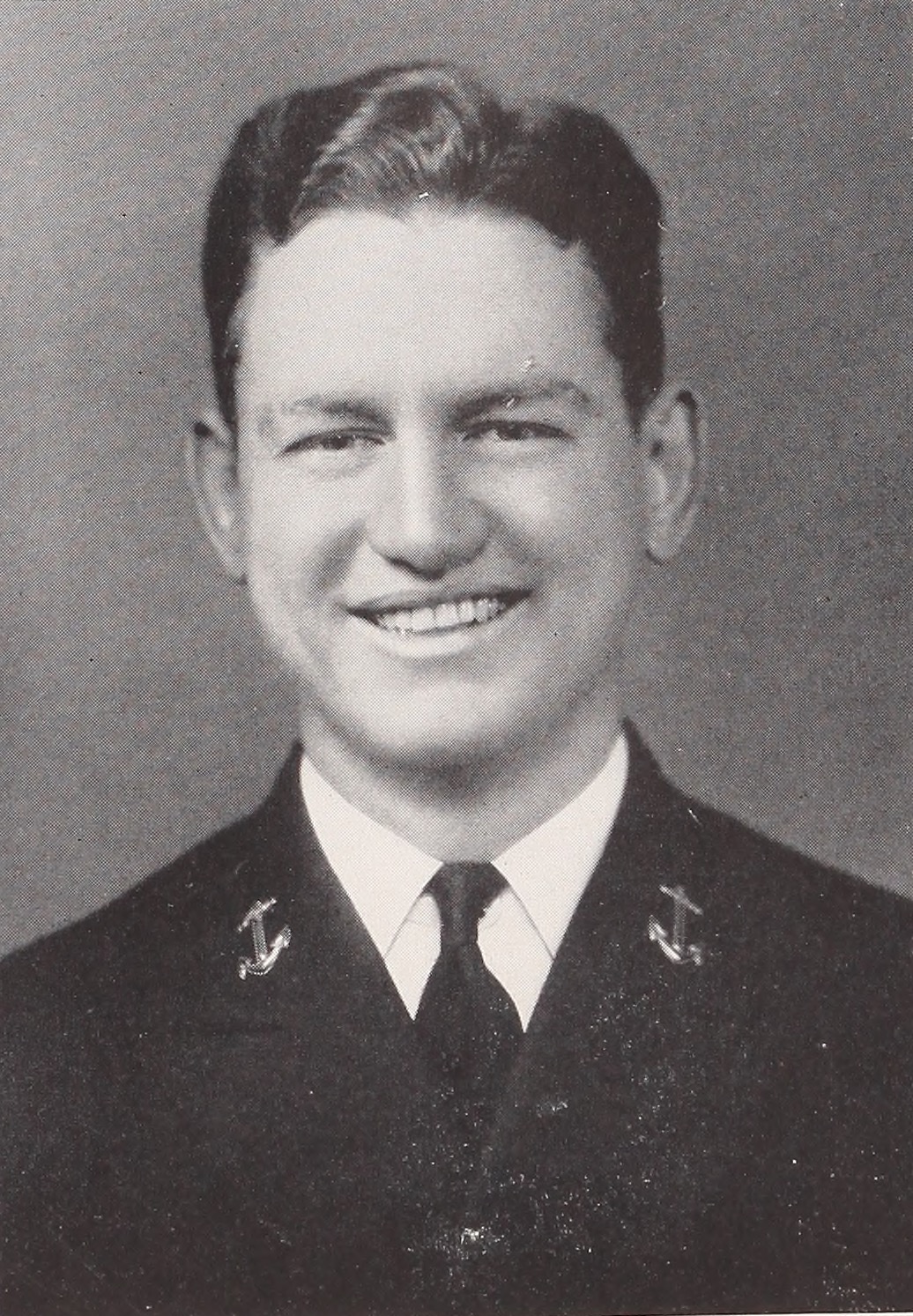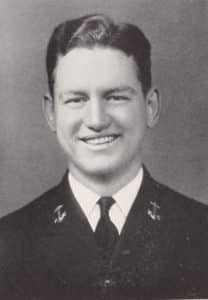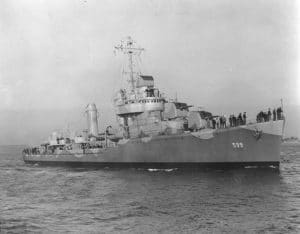

William Guice, Image courtesy of Naval History and Heritage Command
On November 13,1942, surface units of the US Navy commanded by Admiral Daniel Callaghan engaged a numerically superior Japanese surface force off the coast of Guadalcanal. The fighting that night is generally considered to be the most confused melee in US Navy history.
At 1:25 AM, radar aboard the cruiser USS Helena (CL-50) indicated several targets approaching and closing rapidly on the US cruiser and destroyer formation. Communication failure between the US ships allowed the American and Japanese ship formations to intermingle before either side realized their enemy was upon them. At 1:38 AM, two Japanese ships illuminated the US cruiser Atlanta (CL-51) with searchlights at a range of only 3,000 yards. Once the cruiser was illuminated, nearly all the ships, both US and Japanese, opened fire at once.

USS Barton (DD-599), Image Courtesy of National Archives and Records Administration
For nearly 40 minutes, the two formations traded gunfire and torpedoes at close ranges as ships from both navies were hit and sunk, with American forces taking the brunt of the beating. By early morning, however, the Japanese formation had been driven off and denied their mission to shell the Marines on and around Henderson Field. Well over 1,000 American sailors died in the fight, including Biloxi, Mississippi, native William Guice.
Guice graduated from the Naval Academy in 1940 and was assigned to the destroyer USS Barton (DD-599) in 1942. During the battle, Barton was one of the ships that became entangled in the Japanese formation. Barton continuously traded almost point-blank fire with the Japanese battleship HIEI. Nearly colliding with another American ship, Barton, swerved out of line, cut her engines, and almost immediately took two Japanese torpedoes amidships. The small destroyer broke in two, and slipped beneath the waves in minutes, taking 164 of her crew with her, including Lieutenant Guice.
